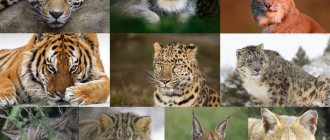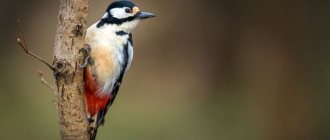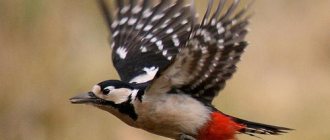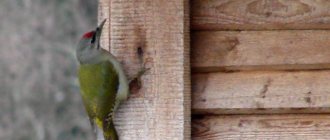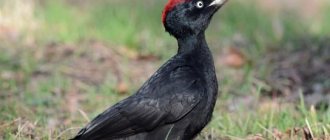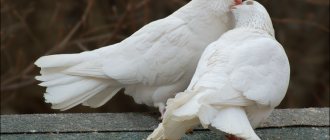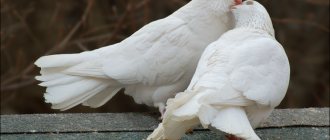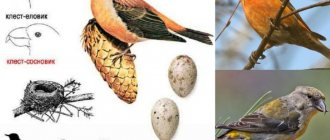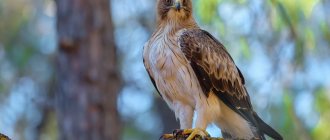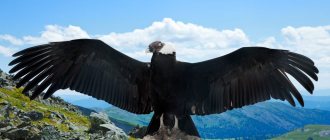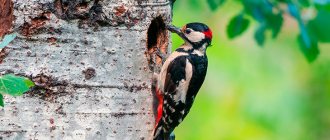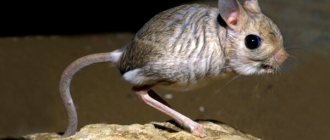Why does a woodpecker knock on a tree: explanation: Pixabay As soon as the snow melts and the sun warms up, everything comes to life in the forests. You can hear the singing of birds and often the sound of a woodpecker. It can be difficult to see a loud forest inhabitant, but the sounds it makes can travel hundreds of meters in calm weather. Why does a woodpecker knock on wood? There are several explanations for this, which are discussed in detail below.
Why do woodpeckers live so little?
For the same reason, like all other woodpeckers. All woodpeckers die from concussion. ... To prevent damage to the bird's brain when pecking, there is a special shock-absorbing cushion between the woodpecker's beak and the woodpecker's brain. And in old age, like all old people, it ceases to be elastic and resilient.
Interesting materials:
How to put up a Christmas tree so it doesn't fall? How to put a checkmark on the keyboard? How to set degrees in Instagram Stories? How to put quotation marks? How to pause Life? How to put a GIF on the main screen? How to set notifications on Twitter? How to set a password to log into Windows? How to set a password for YouTube on TV? How to put a password on the Samsung A21s application?
Types, photos and names
In total, there are more than 200 species of woodpeckers in nature; below we will describe the most interesting of them.
Great Pileated Woodpecker
Despite its name, the great sharp-winged woodpecker is not that big, its length is 14-16 cm, weight 20-30 grams. It is variegated in color; males have several red feathers on their sides. Lives in East and Southeast Asia.
common woodpecker
The great spotted woodpecker is the most common member of the woodpecker family. It lives over a wide geographic range, including almost all of Eurasia, from the forests of England to the forests of Japan. These woodpeckers are also being introduced into our Ukrainian forests. They can be distinguished by their color; the spotted woodpecker has black and white colors, which are combined with a bright red undertail, which gives the bird a mottled appearance. Some woodpeckers of this species also have a red head, a kind of “red cap”.
Syrian woodpecker
Initially, the Syrian woodpecker was distributed exclusively in the Middle East, but in the Middle Ages these birds penetrated into the Balkans and Eastern Europe (including these woodpeckers also live in Ukraine). In its appearance and habits it is very similar to an ordinary woodpecker, it is distinguished only by a number of small differences: a longer beak, on the sides of the belly the Syrian woodpecker has developed streaks. Also, the common spotted woodpecker has two white spots between the eye and shoulder; in the Syrian woodpecker, these two spots are merged into one large one.
Interesting fact
In a conversation about whether a woodpecker is a migratory bird or not, how this representative of the bird world lives and what it eats, I would like to remember another of its names - forest orderly. Why is it called that way? Because it destroys harmful insects - each of us will say. The answer is correct, but not entirely complete. The woodpecker only pecks at sick trees. You won't see it on young, healthy plants. On a living green tree, he will only hammer in the place where it is sick. In this way, the bird eliminates the source of the disease and protects the plant from further damage. Here he is, a little feathered forest orderly!
Nutrition
In fact, the woodpecker’s diet and its “trademark” chiselling on trees are related to each other in the most direct way. Yes, this is the simple way woodpeckers get their food. The basis of their diet is various insects and larvae that live in the depths of trees: termites, ants, aphids, bark beetles. Moreover, interestingly, such activity of woodpeckers also benefits trees, because these birds rid them of pests.
Woodpeckers always unerringly choose diseased trees infested with pests as trees for chiselling, which is why they nicknamed our feathered hero the “forest doctor.” How do woodpeckers recognize such trees? The fact is that nature has endowed these birds with very fine hearing, and woodpeckers are able to hear the slightest creaking noise made by the stings of pests inside trees.
But let's return to the food of woodpeckers; in addition to harmful insects, woodpeckers are not averse to eating berries, plant seeds, and nuts obtained from the cones of coniferous trees.
Nature created them this way
Woodpeckers knock on tree trunks because they cannot live any other way. Only a small part of their diet consists of cone seeds, fruits, and acorns. Birds living close to human habitation may eat food scraps. Sometimes they even eat carrion. However, the basis of the woodpecker's diet is beetles and larvae, which these tireless workers do not pick up from the ground, but extract from tree trunks.
Some people believe that woodpeckers damage wood by leaving holes in it. But scientists have found that these birds never chisel healthy trees. Why should they waste their energy? After all, when struck, they have to withstand a colossal load.
Before starting to chisel, woodpeckers first tap on the trunk and listen to the sounds generated. If there is no food in the trunk, they fly to another tree.
These birds eat bark beetles, longhorned beetles, stag beetles, ground beetles, weevils, moths, coccids, aphids and dozens of other types of dangerous insects. If these pests are not eliminated in time, they can destroy entire forests.
Natural enemies
Natural enemies of the green woodpecker include feathered and terrestrial predators that are capable of hunting adult individuals and also destroying their nests. In addition, the decline in the population is facilitated by competition with the fairly common gray woodpecker and human activity, which causes the drying out of large areas of broad-leaved forest stands. Modern agriculture is also the reason for the decline in the number of green woodpeckers. Once upon a time, ants built anthills in uncultivated and unfertilized fields. Currently, almost all fields are regularly mowed and fertilized, chemical means of protection against various pests are widely used, and anthills, sometimes by accident and sometimes on purpose, are destroyed. Tall grass provides shade, coolness and moisture, but in mown meadows there is no place for ants to build new shelters. Thus, the areas suitable for green woodpeckers to live are constantly decreasing, so they are now becoming less and less common in the wild.
Kinds
The woodpecker family is divided into 4 subfamilies, each of which contains several dozen birds. Among the most common species of woodpeckers are the following.
Great Pileated Woodpecker
The size of this bird is about 15 cm and weighs 30 g. It has a variegated black and white color on the upper part and white and gray on the lower part. Below on the back there is a light spot in the shape of a diamond. The forehead area is dark gray, the back of the head is black, and in males there are red feathers on the back of the head. Black “whiskers” extend from the beak. Young woodpeckers of this species are darker and more colorful. The Great Woodpecker is found in southeast Asia.
Brown-fronted Woodpecker
These are medium-sized birds, whose body length is about 20 cm and weighs up to 50 g. They have a beak of medium length with a wide base. The plumage on the wings and back is black and white, the belly is white, and there is a colorful “cap”. Males are distinguished by a red nape, while females have a yellow nape. There are characteristic black “mustaches” on the chin and cheeks. This variety got its name due to the yellowish-brown color of its forehead. The brown-fronted woodpecker is found in Afghanistan, India, and Nepal.
green woodpecker
The green woodpecker measures about 35 cm and has a wingspan of 44 cm. The plumage in the upper part is a characteristic greenish color, while in the lower part it is light. In the crown area there is a small “cap” made up of red feathers. The habitat of green woodpeckers is the forests of the Volga region and the Caucasus. There they lead a sedentary lifestyle and rarely leave their inhabited territory.
Pileated Woodpecker
This is a small bird, the size of which does not exceed 22 cm, but it has a rather dense build, which is why the weight can reach up to 50 g. The back and wings are black, with a pattern of white spots on them. The throat area is white, the chest and belly are yellow, and there are black spots. The male has a red “cap” of feathers on his head, while the female has a black “cap”. The spotted-breasted woodpecker lives in Indochina.
Yellow-capped Woodpecker
The dimensions of this species are relatively small - 18 cm with a weight of about 35 g. The birds have a long and straight beak. Their plumage on the forehead and crown is golden in color. In males, the nape area is bright red, in females it is brown. The “whiskers” are practically not expressed. The area of the cheeks, throat and chin is white with brown streaks. The body is black on top with white spots, the loin is white. The belly is light with an orange-red spot. Juveniles are predominantly brown in color.
Red-bellied Woodpecker
The size of the red-bellied woodpecker is about 25 m in length, and its weight is from 53 to 70 g. Males have a black back with white stripes, and a chestnut belly. Females have a brown back. Also, the sexual dimorphism of birds lies in the color of the “cap”: in males it is red, in females it is black with white spots. The rufous-bellied woodpecker is found in the Himalayas, China, Thailand and Vietnam.
Middle Spotted Woodpecker
The dimensions of this bird are relatively small: 22 cm, but the weight can reach up to 80 g. Woodpeckers have a short dark gray beak. The upper part of the body is black and white, with streaks on the wings. The belly and sides have a yellow tint, and there are longitudinal black lines. The “whiskers” are practically not expressed. There is a bright red “cap” in the crown area. Juveniles have duller plumage than adults. Representatives of this species are found in southern Europe and Western Asia. For life, they choose mixed forests, in which the presence of oak dominates.
White-backed Woodpecker
The size of the white-backed woodpecker is about 30 cm with a body weight of 100 g. Males have a white forehead and temples, a red “cap” with white spots, the back of the head and back are black, like the “whiskers”. The belly is white, with an ocher tint present on it. Females have a black “cap” on their heads. The southern Eurasia becomes the habitat of the white-backed woodpecker.
Final table of woodpecker species according to user ratings
White-backed Woodpecker5 Green Woodpecker4 Brown-fronted Woodpecker3 Spotted Woodpecker3 Yellow-capped Woodpecker3 Spotted Woodpecker3 Sharp-winged Woodpecker2 Rufous-bellied Woodpecker1
They arrange mating games
In central Russia, the mating season of woodpeckers occurs in February-March. At this time, the males scream quite loudly. Loud drum rolls are a mandatory attribute of flirting. It is believed that in this way birds demonstrate their ability to obtain food and provide food for their families.
As a rule, woodpeckers knock on the same tree, which they like best. Trying to impress his partner, the male even flutters around her like a butterfly. From the outside, he may seem like a sweet and carefree bird.
However, males who have already “agreed” with the female become incredibly aggressive. They may even attack potential rivals.
Interesting information
An adult needs to correctly describe the Woodpecker bird for children. Already at preschool age you can talk about the inhabitants of the forest. To do this, it is worth not just talking about the external characteristics of the bird, but also various interesting facts.
Sample list:
- The woodpecker is called the forest doctor because it eats a large number of insect pests.
- Birds fly reluctantly and mostly flutter between trees.
- The special structure of the skull protects the brain from concussion.
- The woodpecker's tongue is long and sticky - this allows it to quickly collect insects.
- Knocking on wood allows woodpeckers to communicate with each other.
- The tail serves as a support for the bird and over the course of a year of life it wears off by about 10%.
- In a second, a woodpecker can make up to 20 blows on a tree.
Children should be shown color pictures that will help them remember the types of birds. After studying the topic, you can conduct a quiz or other exciting games that will help you reinforce the material.
Woodpeckers are sometimes kept in captivity, but they are not the easiest birds to keep. She needs a large and spacious enclosure. The main difficulty is nutrition. You can give mealworms, a small amount of raw meat, and nuts. There must be spruce and cedar cones in the cage. The bird will spend the whole day diligently sorting them out and this will distract it.
At home you can feed cockroaches and crickets. Hawkmoth caterpillars are suitable as a treat. Pet stores have ready-made food for insectivorous birds, but the diet should not consist only of it.
Special mash should make up 20% of the diet. For woodpeckers, it is made from boiled quail eggs, which are thoroughly crushed, and grated raw carrots. Additionally, you can give raw vegetables and greens - lettuce, zucchini, bell peppers, etc.
Sometimes low-fat cottage cheese, vegetable and fruit baby purees, fruits, and raisins are added to the diet. Keeping forest birds at home requires special skills from the owner, otherwise the pets will quickly die. Therefore, it is better to observe the woodpecker in its natural habitat.
Common types
Great spotted woodpecker (Dendrocopos canicapillus)
The photo shows a great sharp-winged woodpecker.
A small bird with a long, straight beak. Body length is from 14 to 16 cm. Body weight ranges from 20 to 30 g. The plumage is motley, black and white above and whitish-gray below. At the bottom of the back there is a light diamond-shaped spot. The forehead and crown are brownish-gray, the back of the head is black. The male has red feathers on the back of his head. Dark “whiskers” begin from the beak. The cheeks and throat are white. The back is dark. The belly is whitish-gray with dark streaks. The iris is red-brown or red, the legs and beak are dark gray. Juveniles are darker and motley. Females do not have red feathers on the back of their heads, but otherwise they do not differ from the male.
The species is distributed in eastern and southeastern Asia.
Brown-fronted Woodpecker (Leiopicus auriceps)
This is what a brown-fronted woodpecker looks like
. A medium-sized woodpecker that lives in the foothills and lower belt of the Himalayas (Afghanistan, Pakistan, India and Nepal).
The body length reaches 20 cm, weight from 37 to 50 g. The beak is of medium length, chisel-like, with a wide base. The plumage on the back and wings is motley, black and white, the belly is light, the “cap” is colorful. The forehead is yellowish-brown in both males and females. But the male has a lemon-yellow crown and the back of the head is red, while the female has both the crown and the back of the head yellow. The cheeks and chin are white with a black mustache. The chest and belly are white with dark streaks.
Yellow-breasted Woodpecker (Dendrocopos macei)
Photo of a yellow-breasted woodpecker on a tree.
The species' habitat includes countries such as Bhutan, Bangladesh, Cambodia, India, Indonesia, Laos, Myanmar, Nepal, Pakistan, Thailand and Vietnam.
Medium sized woodpecker. The plumage on the back is black with white transverse stripes. The breast is light brown. Neck with black stripes on each side. Males have a red head with an orange forehead, females have a black head.
Spotted Woodpecker (Dendrocopos atratus)
Photo of a spotted woodpecker
A small bird with a dense build, a resident of Indochina. Body length up to 22 cm, weight from 42 to 52 g. The back and wings are black with a white spotted pattern. The neck is whitish, the breast and belly are yellowish-ochre in color with thin longitudinal black streaks. The undertail is red. The sides of the head are white with a black stripe of “whiskers”. The male has a bright red cap of feathers running from his forehead to the back of his head. The female's is black.
Yellow-capped woodpecker (Dendrocopos mahrattensis)
The species is widespread in Hindustan and Indochina. This is a small bird with a long straight beak. Body length is about 18 cm, weight from 28 to 46 g. The plumage in the forehead and crown is golden yellow. The nape of the male is bright red, while that of the female is brownish-ochre. The “whiskers” are weakly expressed. The cheeks, chin and throat are white with brown spots. The body at the top is black or black-brown with white spots and streaks, the lower back is white. The belly is white with an orange-red spot in the center. Young birds are feathered brown.
Red-bellied or red-necked or red-breasted woodpecker (lat. Dendrocopos hyperythrus)
Body length from 20 to 25 cm, weight from 53 to 74 g. The beak is long. The male's back is black with white transverse stripes, his belly is reddish-chestnut. The female has a brown back. Males have a shiny red cap on their heads, while females have a black cap with white spots. The legs are gray, the iris is red.
The habitat begins in the Himalayas from Kashmir to Assam. The bird is also found in China, Vietnam and Thailand.
Middle Spotted Woodpecker
- Latin name: Leiopicus medius, Dendrocopos medius
- Body length: 22 cm.
- Weight: from 50 to 85 g.
- Order: Woodpeckers
- Family: Woodpeckers
- Genus: Spotted Woodpeckers
- Conservation status : Least Concern
The head is rounded, the beak is short, dark gray. The upperparts are black with white streaks on the wings. The belly and sides are yellowish with dark longitudinal streaks. The iris is red-brown, the paws are gray. The “whiskers” are weakly expressed. There is a bright red cap on the crown. Young birds are dull.
The species nests in temperate and southern latitudes of Europe, as well as in Western Asia. Habitat: broad-leaved, mixed forests, most often dominated by oak.
Photo: Middle Spotted Woodpecker
The Middle Spotted Woodpecker is similar to the Great Spotted Woodpecker, but if you look closely the two birds are noticeably different from each other. The color of the average spotted woodpecker is not as bright as that of the great one. It knocks less, in the summer it spends most of its time in the crown of trees and practically does not fall to the ground.
White-backed Woodpecker (Dendrocopos leucotos)
Body length is from 26 to 31 cm, wingspan is 44-49 cm, body weight is from 100 to 130 g. The male has a white forehead and sides of the head, a red “cap” with white spots, the back of the head and back are black. The mustache is black. The belly is white, with an ocher coating; sides with dark longitudinal streaks. The undertail is pink. The female has a black cap on her head.
The bird lives in the south of Eurasia.
Great Spotted Woodpecker
- Latin name: Dendrocopos major
- Body length: 22-27 cm.
- Wingspan: 42-47 cm.
- Weight: 60-100 g.
- Order: Woodpeckers
- Family: Woodpeckers
- Genus: Spotted Woodpeckers
- Conservation status : Least Concern
Body length is from 22 to 27 cm, wingspan is 42-47 cm, weight is from 60 to 100 g. The plumage is dominated by black and white tones, the undertail is bright red. The top of the head, back and rump are black. The forehead, cheeks, shoulders and tummy are brownish-white. The tail is black. The iris is brown or red, the beak is black, the legs are dark brown.
The species is found in Africa, Europe and Asia Minor.
Syrian woodpecker (Dendrocopos syriacus)
The bird's habitat covers Asia, Central and Eastern Europe.
Body length up to 23 cm, weight from 55 to 80 g. The top of the head is black, the forehead, sides of the head and cheeks are white. The male has a bright red stripe on the back of his head; the female does not have it. The "whiskers" are well developed. The throat, neck and belly are off-white. The undertail is red. The iris is red. The beak is dark gray. Paws are gray.
White-winged Woodpecker (Dendrocopos leucopterus)
The species is found in Central Asia, Dzungaria and Kashgaria.
Body length from 22 to 24 cm, weight about 70 g. Beak of medium length, straight. There are large white spots on the shoulder blades and wings, the belly and undertail are bright red. The forehead is white.
Communicate with relatives
Woodpeckers are one of those birds that do not sing. Of course they have a voice. They can pronounce “kr-kr-kr”, “ki-ki-ki” and some other sounds that can be heard during the mating season. Woodpeckers also scream when a stranger from among their fellow tribesmen has entered their territory.
However, most often these birds give signals to each other by knocking. They beat the drum in different ways. It can be vibrating, dry, jerky, sharp. Typically a shot lasts 0.6 seconds and consists of 12 beats. You can hear it at a distance of up to 1.5 km from the bird.
Marking the territory
Many birds and animals are territorial owners. They mark their possessions in a variety of ways. The woodpecker chisels tree trunks for this purpose. Perhaps he leaves behind some kind of mark that is understandable only to his fellow tribesmen.
The area of one bird can reach 12 hectares. If a stranger suddenly flies into the woodpecker’s domain, the owner beats a drum, trying to frighten the insolent person, flies over him, and shouts. Sometimes it even comes to a fight.
“Lips went numb”: Priluchny spoke about the difficulties during the filming of “Devyatayev” “Finished the script”: Yulia Mikhalkova is going to shoot a full-length film New troll figures by artist Thomas Dumbo: he continues to “hide” them in the forests
